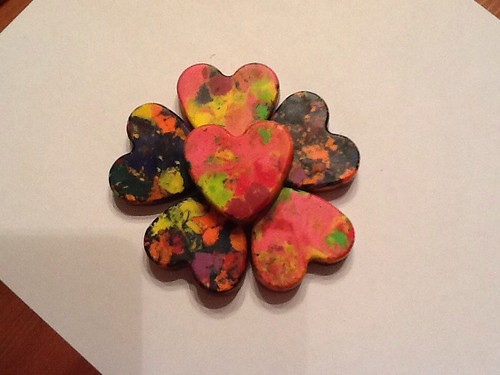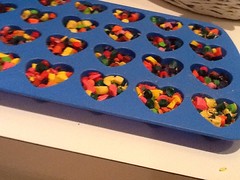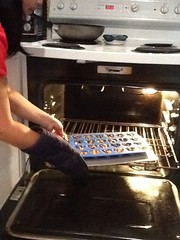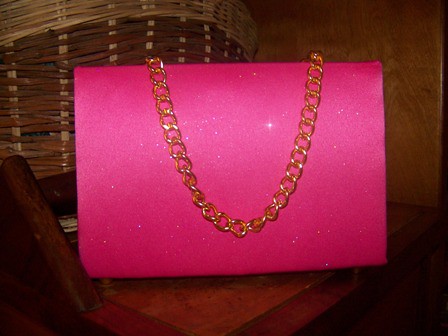Continuing on last week’s challenge theme, I chose used gift cards to be the subject of this week’s RETROCRAFT project.
All week long, I considered different ideas to incorporate gift cards. I initially considered making wallet sized picture frames out of my old gift cards.
But a last minute change of plans transformed my picture frames into photo key fobs.
A few years ago, my son’s school photos included laminated photo key tags that I proudly display on my key chain.
Going through my keys, I realized that my son’s photo was several years old.
My creative light bulb went off at that moment and my new idea was born.
To get started you will need:

2 used gift cards or hotel card keys
A ruler
A craft knife
Pliers
Nail clippers
Fine grit sandpaper
Envelope with a clear window or ziplock bag
Photos
Glue
Craft paper
A ¼” wide nail
A candle or tea light
A lighter to ligth the candle
4 medium binder clips or clothespins
Marker or pen
A key ring

 1.
1. Measure the length of one gift card and determine the center.
Cut the gift card in half using your craft knife and ruler (as a straight edge).
You will need to make several passes with your craft knife.
After making several passes, you can fold the gift card along the score line to snap it in half.
After breaking the gift card in half, match the uncut edges and confirm that each half is the exact size.
(It might help to clip the halves together.)
If necessary, trim the wider half to match the other.
If you’d like to snap off any excess, it might help to use pliers to hold onto the excess edge.
2. Cut the other gift card in half just as you did in step 1. Take one half of this second gift card and size it with the halves you cut in step 1, in the same manner described in step 1. (The other half can be retained to make a second key fob or can be recycled.)
3. Round the square edges of these gift card halves. Using a nail cutter is the best way to do this. Again, make sure the rounded edges of the gift card halves match.
4. Use the sandpaper to clean and smooth the cut edges of each gift card half. Stack the three (3) halves and make sure all match. Mark the outside face of the half that is on the top of the stack and mark the outside face of the half that is on the bottom of the stack. These will be the “right” sides for future reference.
5. Take the top gift card half from the stack and cut a square window into the center using your craft knife and straight edge. When you cut the window, make sure you leave a ½” space at the bottom of the half. You will need this space to create the hole for the fob. It will take a number of passes with the craft knife to cut the window. The sharper your craft knife blade, the better. As you cut the window, make sure that you are still able to identify the right and wrong sides of the card half. After window is cut, recycle the center portion and use the sandpaper to smooth the edges. Be sure to remember that this gift card half was the top of your stack.
6. Repeat step 5 with the gift card half that is at the bottom of the stack. Be sure to remember that this gift card half was at the bottom of your stack.
 7.
7. Cut the window from an envelope into sections that will adequately cover the windows that you cut into the gift card halves.
(If you don’t have an envelope window, you can also cut the clear portion a ziplock bag.
With the right side of each gift card half facing downward on your work surface, put a thin line of glue around the edge of the gift card windows.
Adhere each section of envelope window to each gift card half.
8. Cut your photos to size so that your desired image will show through each gift card window. Using the gift card that was in the center of the stack you put together in step 4 (the one that does not have a window), glue your photos to each side. When placing the photos, keep in mind that when you stack the gift cards halves again, the photos should show throw the windows.

 9.
9. Place the “top” gift card from step 5 on a well protected work surface, right side down.
Holding the nail with pliers, heat the 1” tip of the nail in the flame of your candle.
After heating for 1 minute, use the heated nail to bore a hole in the corner of the top gift card half.
Be especially careful with the nail because it will be hot; be sure that you hold it with the pliers while it is heated.
It is a good idea to keep a cup of cold water close by.
You can drop the nail into the water to cool it quickly.
Use your craft knife to clean the edges of the whole and remove any excess plastic.
On both sides of the card, you want to make sure the area around the hole is flat and not raised.
10. Match the photo gift card half from step 8 with the top gift card half from step 9 (right side up). Clip together with binder clip or clothespin. Using a pen or marker, mark the position of the hole so that you know where to bore the hole into the photo gift card half. Follow step 9 with the photo gift card half. (Make sure the photos you adhered to this gift card half are cut so that the area where the hole will be bored is not covered by any part of the photos.)
11. Match the top gift card half from step 9 with the bottom gift card half from step 6, matching wrong sides to wrong sides. Again, using a pen or marker, mark the position of the hole so that you know where to bore the hole through this third gift card half. Follow step 9 with the bottom gift card half.
 12.
12. Apply a thin layer of glue to the right sides of the top and bottom gift card halves from steps 9 and 11.
Adhere the right sides of these gift card halves to the wrong side of your craft paper and let dry completely.
13. When the glue is dry, carefully cut the excess craft paper away from the gift card halves. Cut the craft paper away from the windows as well. If you do not wait until the glue is dry, the paper may become jagged as you cut. Using your craft knife and/or the cold nail, bore holes into the craft paper to matcht the holes you made into the gift card halves. Try to cut any excess paper away from the holes.
 14.
14. Stack the gift card halves to make your fob.
The paper should be on the outside faces, the photos should show through the windows and the holes should match up.
Glue the cards together and clip together using the binder clips or clothespins.
Let dry completely.
15. Cut a strip ¼” wide at least 10” long. Glue the strip along the exposed edge of the newly formed fob. Cut away any excess with your craft knife.
16. Apply a very thin layer of glue to the paper on the top face of the fob and the paper covered edges. (Do not apply glue to the windows.) Let dry thoroughly. When the top face is dry, apply a very thin layer of glue to the paper on the bottom face of the fob and let dry throughly. The glue in this step is meant to create a decoupage effect and a protective layer that will stiffen the paper.
17. When completely dry, you can place your fob on your key ring!
TIPS: Technically, you could make this craft with heavy cardboard. However, I think that gift card plastic will be much more durable for every day use. This craft can utilize old photos for which you might not otherwise have a use. However, in lieu of photos, you can use clip art. Before applying the glue in step 16, you could embellish the faces of the fob. For example, you could use mini-alphabet stickers to spell the names of those people whose images are in the photos you have a selected.
Because of the use of the nail, candle and craft knife, this project is not appropriate for children. But even without the help of my children, I had a lot of fun creating this week’s project. It did take some time and I now need to replace my craft knife blade. Nevertheless, it was fun to watch these gift cards transform into such a practical item!
 Solid color card stock
Solid color card stock 










































